
With each spring day, the sun rises higher and higher. For me, this means longer trips. After all, when it is warm outside, then you want to spend time in nature more than in winter. Of course, I take my phone with me on a camping trip. So the world legislators of technical progress have taught us that modern man cannot do without his beloved device. And it’s convenient because, for example, useful applications for tourists are installed on my phone. Here you can see the map, and your location, the tracker draws your way, and if you get a little messy, you can always find a way back. There is also a directory of mushrooms, berries, herbs. As you can see, everyone finds something useful for himself on the phone. But the trouble is, the battery in the phone is not eternal and sooner or later it will sit down. Creative Chinese have come up with a number of additional devices to back up the phone on the go. They can safely include all kinds of power banks (power bank :)) and solar charging. I have a small power bank (but it is also not eternal) and I did not have enough solar charge. The thing is good, necessary and useful to a greater extent to travelers and tourists. Scrolling through alishka, I found a good option for a tourist.

Parameters of solar charging.

Check the reality of Chinay goods is not possible. I found only one review where a person wrote the parameters of this solar charge.

They have such a sin, to overestimate the parameters. Especially with lithium-ion batteries.
In principle, this option is normal, but the fucking limit of 22 euros per month introduced in Belarus crosses out the opportunity to buy a thing more expensive. Yes, and petty goods hung on me.
After looking through a bit of alishka, I find ordinary solar panels (link to the panel) at an affordable price.
Here are the parameters of 1pc.

I figured the data and ordered 10pcs.

According to reviews, people are satisfied. One unsubscribed even that the phone charges from one socket. Just did not write how much time :). At the time of purchase, the store had a discount of 1 bucks for a purchase above 10 bucks. I got 10.8 and minus 1, it turned out 9.8. Well, wait.
So, there are sockets, but I need 5 volts to charge. At first I thought in my head thinking to do charging on a DC-DC converter. I remember when I dabbled and made such a converter into a car. But there seemed to be a maximum current of 500 mA. I continue to search and stumble upon such a DC-DC converter.Praise the store, there is EVERYTHING !!!!

The price tag is acceptable, I order !!!
Device Parameters

According to reviews, a good thing and people are happy. Even if the converter gives 1 And then I have enough with my head.
As a result, for all the sunny happiness, I give 12 bucks. It should be borne in mind that I ordered before the law of forced tracking of the parcel was introduced, that is, I did not pay for delivery.
I decided on the excess, it remains to wait for the goods and proceed to manufacture.
List of materials needed in this homemade:
Solar panels
DC-DC stabilized converter (5V output)
Case Material
Transparencies
Glue 88
Ability to cut and sew on a typewriter
Connecting wires
Break button
Heat shrink
Glue snot
Tape for "ears" (mount on a backpack)
Velcro
Here is the socket!
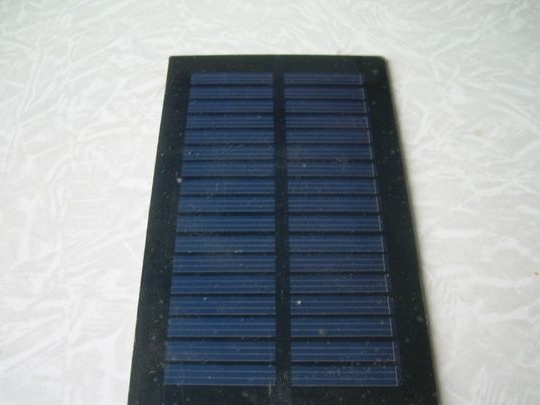
I check the sizes, and suddenly the seller deceived :)

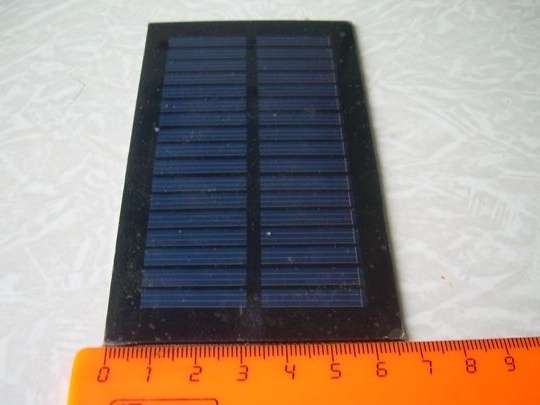
That's right to decency :)
I did not measure the thickness with a barbell, only by eye.
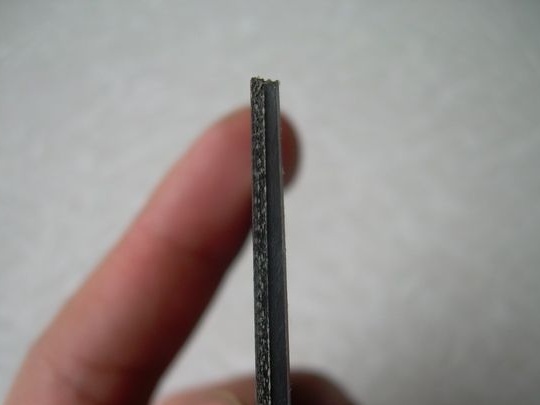
Strange ....... but the panels were a little different, in the sense of the picture.
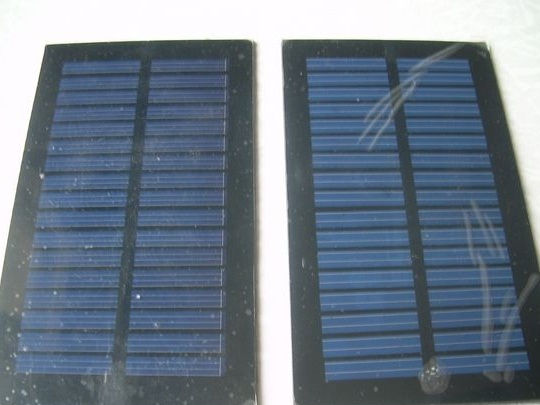
The panels themselves should be described a little. The solar system is glued to plastic. The “face” of the panel is protected by a film; it can be easily peeled off. On the back of the track and nickel for soldering wires. Ordered 10 pcs. but got 11pcs, from this I was not very upset :)
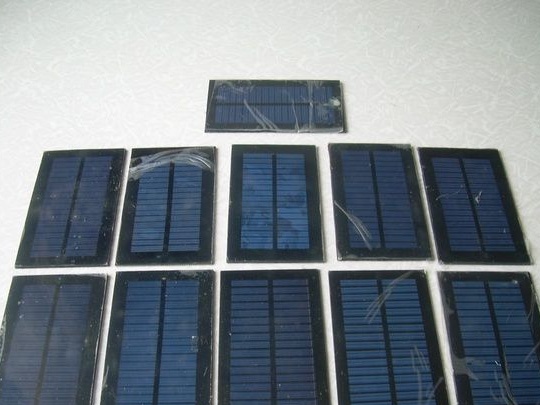
The reverse side of the solar panel :)
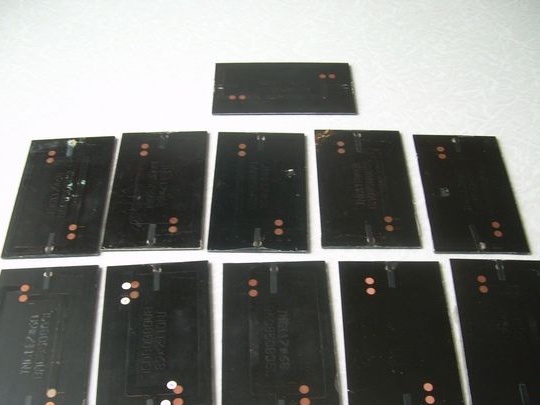
Upon arrival of the solar panels, I checked them for performance. He brought them to the light and tester them :) It was evening, but surprisingly the panels showed 3V. The next day I examined in more detail all the solar panels and discovered a couple of non-essential jambs.
One had an oxidized contact.
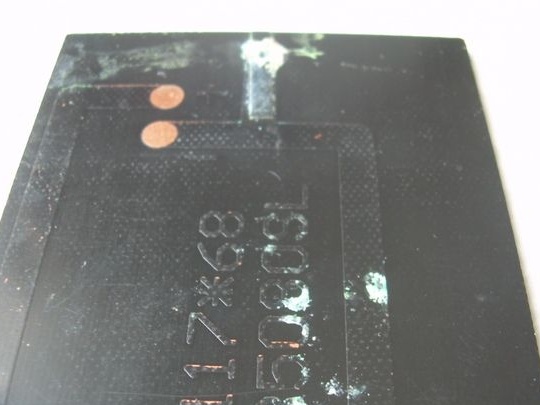
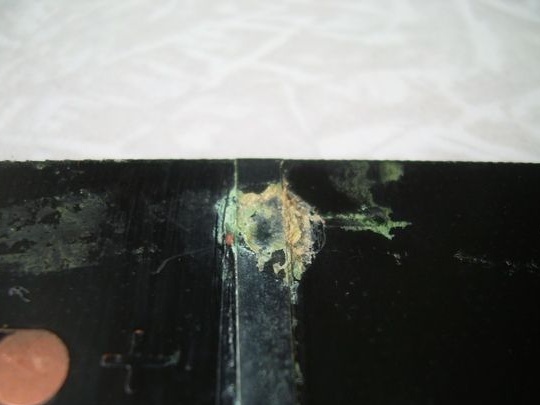
And the second was smeared with resin, similar to rosin.
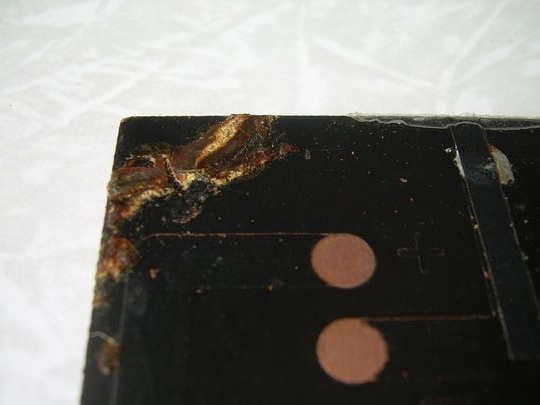
Here, most likely that the seller put 11 solar panels. So that I would look and not start up an argument that nobody needed. The oxidized contact was easily cleaned with alcohol, but I did not even touch the rosin resin, it will work with it :)
Well, with more quality, the panels are pulled to a strong 4.
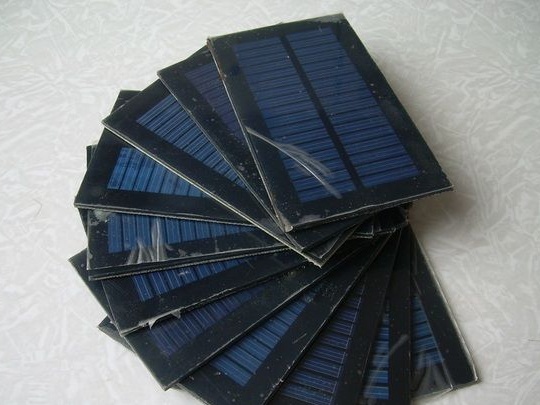
A couple of days after receiving the solar panels, I pick up another small packet from China at the post office. The contents of the package are joyfully surprising; my converter came. The fact is that the Chinese do not bother to track such a trifle. I was surprised because the converter simultaneously came along with the solar panels. Looks like sellers were familiar :)
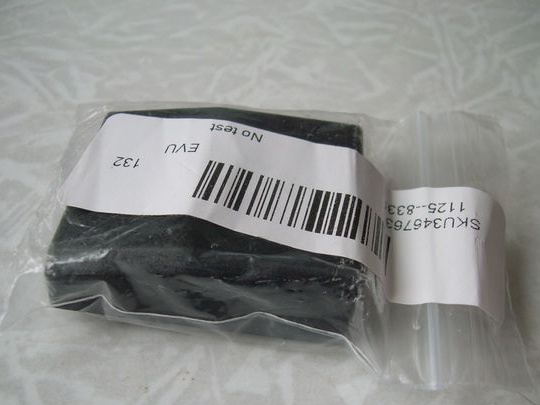
Everything is neatly packed.
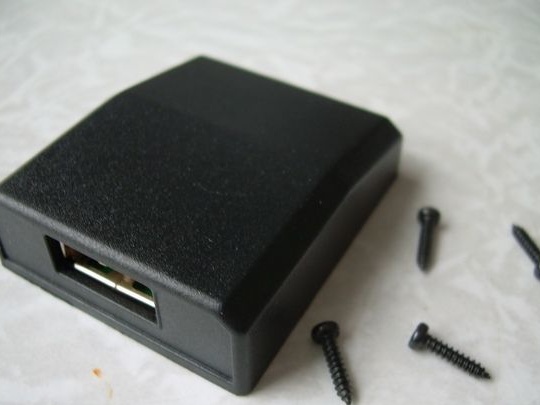
The converter consists of a plastic case, four screws and the board itself.
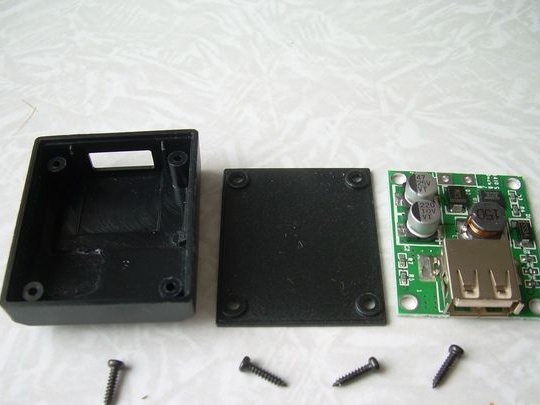
The board itself.
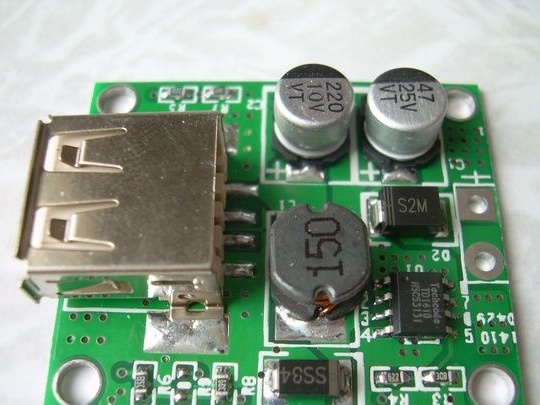
A circuit is connected on the opposite side of the yusbi connector.
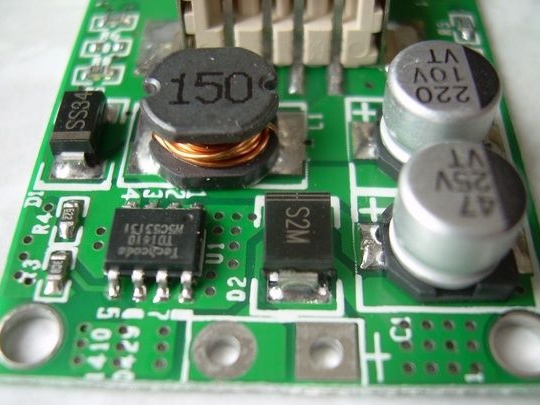
Plus marked. The site says that any voltage up to 18 volts can be applied to the circuit.
Now I need to sew some kind of “house” for my solar panels. I will say right away that it was the hardest for me. I bought the material for the "house" in the store, did not give it expensive, I do not remember exactly how much. I bought a thick waterproof raincoat fabric. The fabric looks a bit like a bonfire tent, only denser.
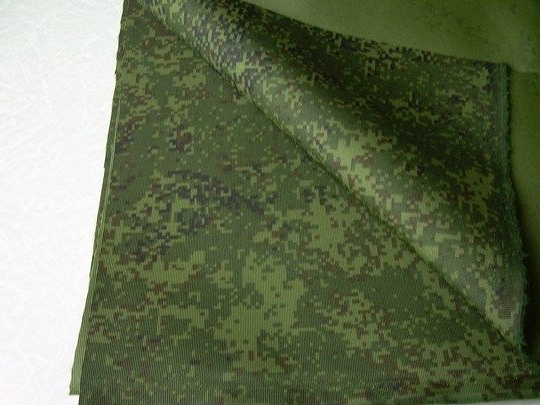
The size of the piece.
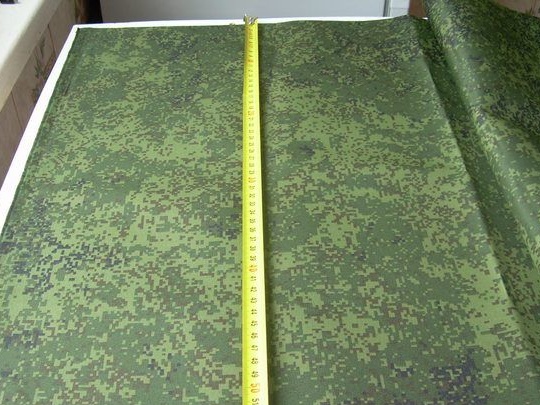
53 cm.
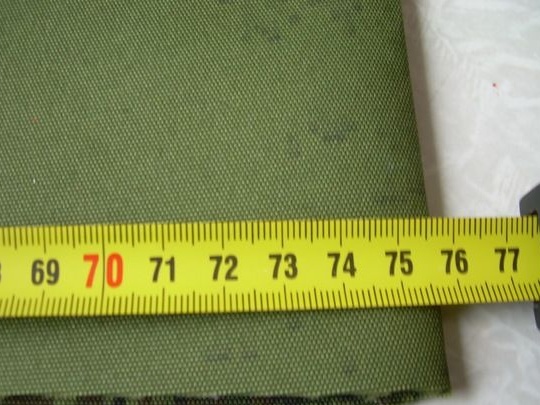
150 cm. The fabric is folded in half.
I’ll run ahead and say that this piece is enough, it even remains.
I don’t know how to sew on a typewriter, I just cut and said what and where. Believe me, this is also not just like that, you need to figure out where the pockets are and how best to make charging work smoothly. In order for our panels to catch sunlight, we still need to make transparent pockets. A suitable transparent film can be taken from a package of pastel linen or auto covers, this is such a bag in which, on the one hand, the usual material, and on the other a transparent film, so that people would see the color of bedding / covers for cars when buying. I hope I clearly explained. Unfortunately, I did not take this picture.
We sewed in two stages, first a cover for solar panels, and then pockets for a phone / tablet.
Here is the first part.
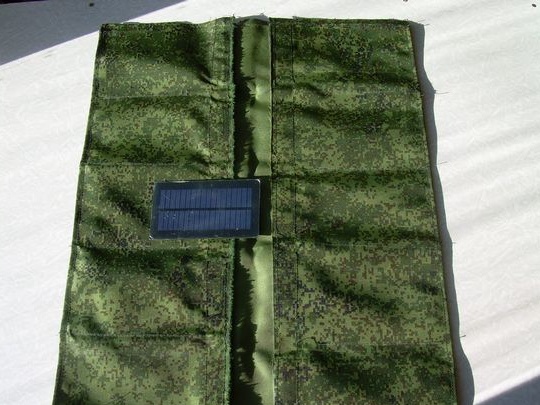
I just folded two pieces of fabric and divided the pockets for the solar panels. In the middle I left a gap of material for convenient folding of the solar battery :) I put a transparent film under each side, then I just gently cut out the rectangles for sunlight. In order that the panels would not fall out of the pockets, I used Velcro.
And here is the second sewn part.
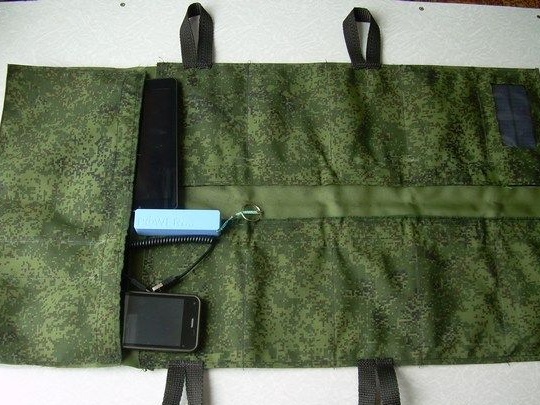
On the sides were sewn "ears" for mounting on a backpack. As you can see, I have already cut out one “rectangle of light” for the solar panel.When mounted on a backpack, the pocket is thrown back. A tablet, a phone and my small power bank are boldly included there.
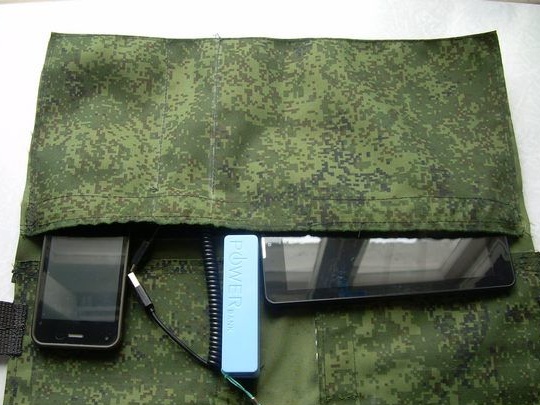
Dimensions of the solar battery. 70cm long
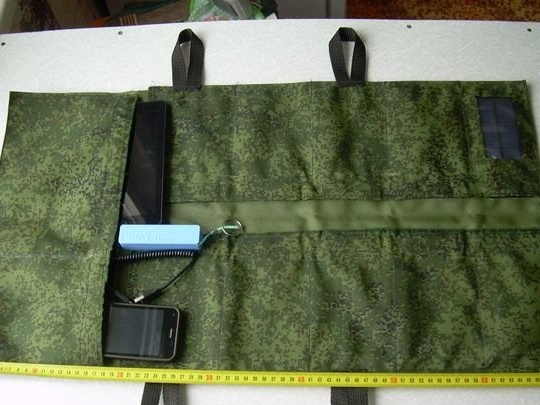
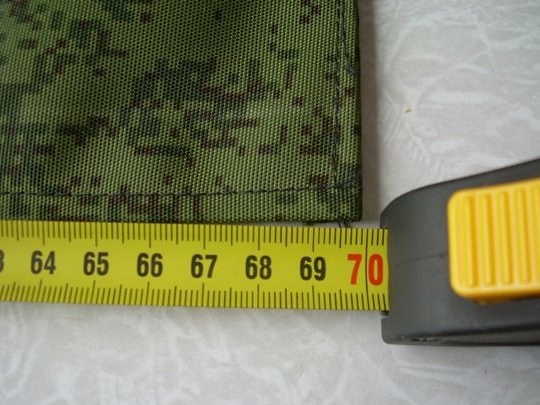
Width 39 cm
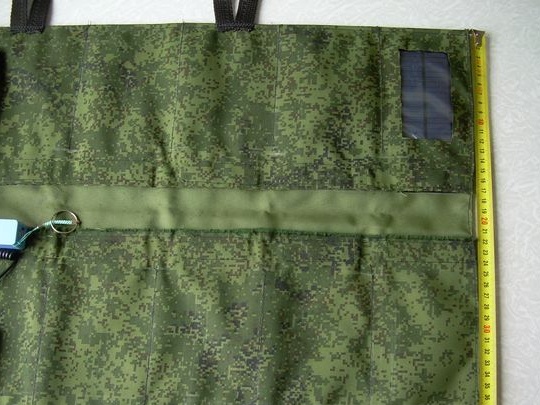
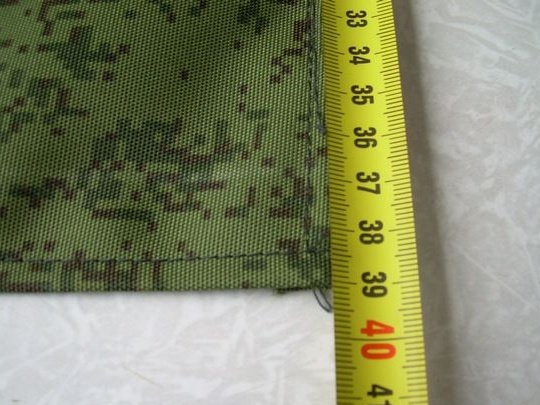
Well, here I cut out all the "rectangles of light" for my solar panels.
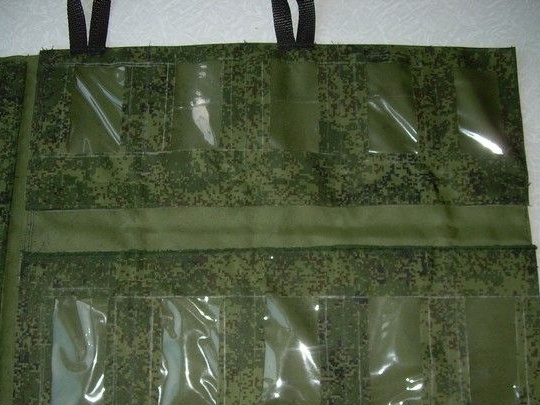
Since pockets for panels were sewn with a small margin, the material lags behind a transparent film. This is easier to understand in the photo than to explain.
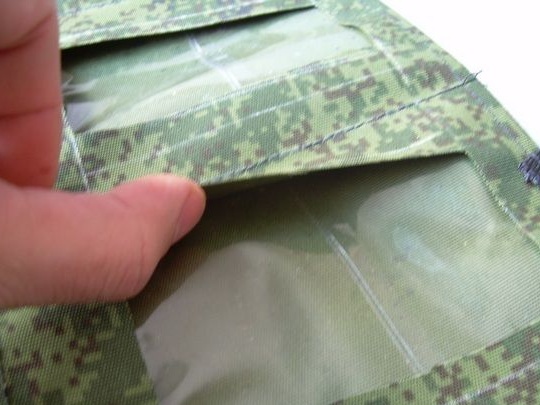
Using 88 glue, I can easily solve this small difficulty.

Good glue, constantly gluing shoes to them, very elastic.
The glued material was dried for a day.
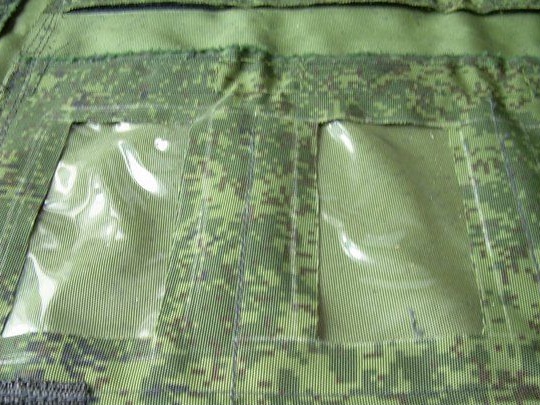
Now I proceed to the most beloved, this is soldering :)
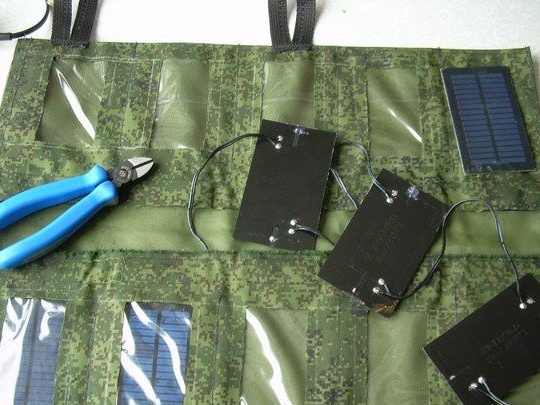
I connect all the panels in parallel. Panel 9 volts.
Since this is a camp charge, for reliability, I pour glue on the snot with all the contacts.

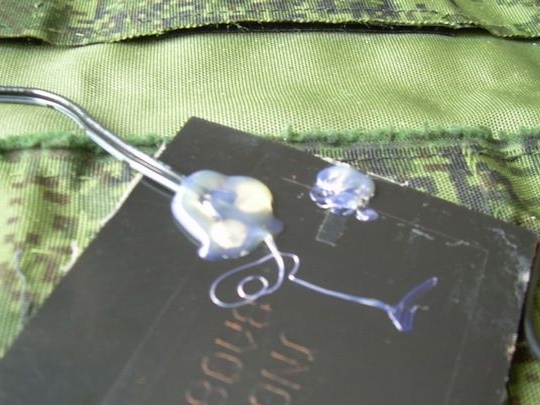
I decided to connect the solar panels through a switch. Such a switch is in flashlights, it is small and convenient.
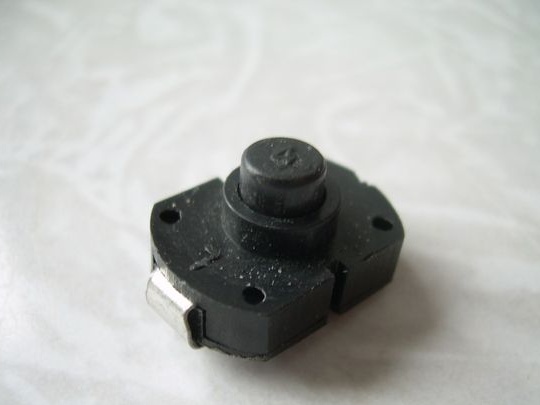
What would be hermetic, I use heat shrink
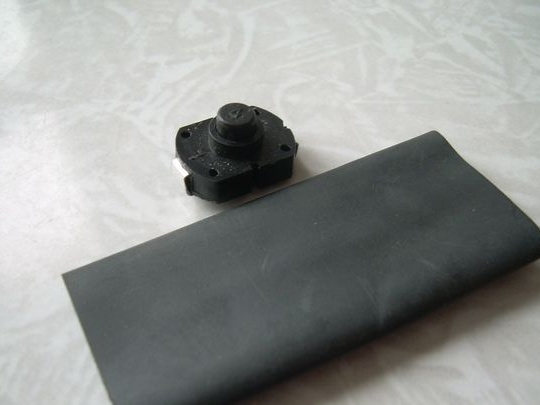
I tear the plus and neatly solder everything and "sit down".
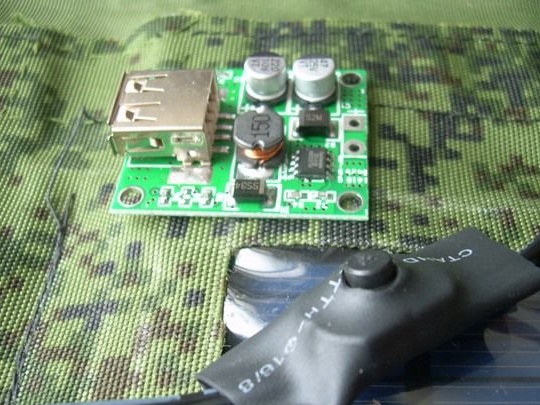
Also FOLLOWING POLARITY I solder wires to my converter to the input of the circuit.
To charge modern mobile devices, we need a yusbi cord.
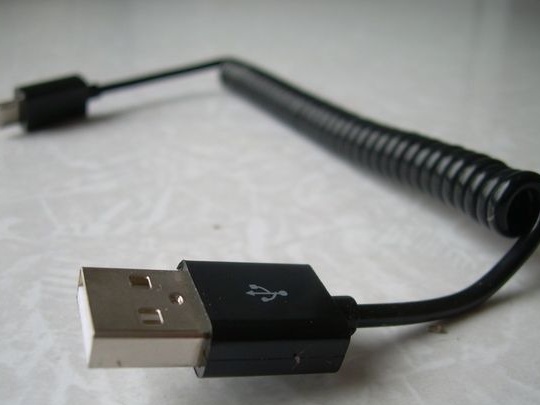
Everything is assembled and it is time to proceed to the tests.
Unfortunately, the first time I didn’t succeed, it was February, and the sky was completely in dark gloomy clouds. At first I was upset, but then sensible logic gave way to disappointment, the panels are solar, why do you want in such a darkness. Taking the tester in my hands, I measured the output from the solar battery ... ... 4.5 volts, what else can I talk about.
After waiting a couple of days, I still caught a little sun. I connect the charging and oplya ....... .. everything works !!!!!!
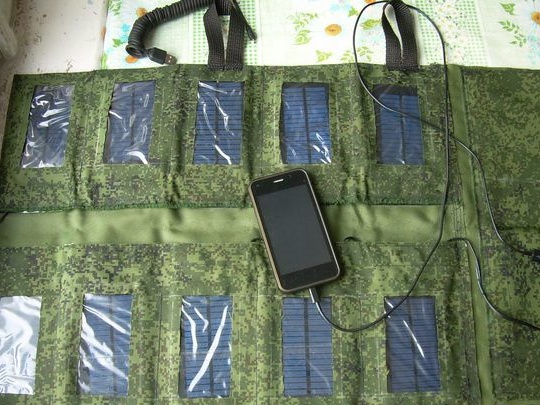
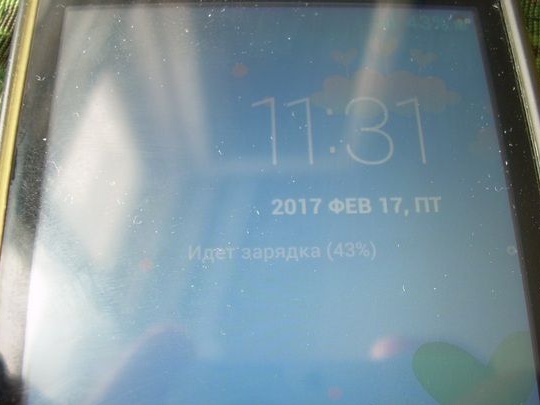
Got it, ohhhhh, I jump and rejoice like a child around a table with a solar charge.
I'm testing my old lady nokia
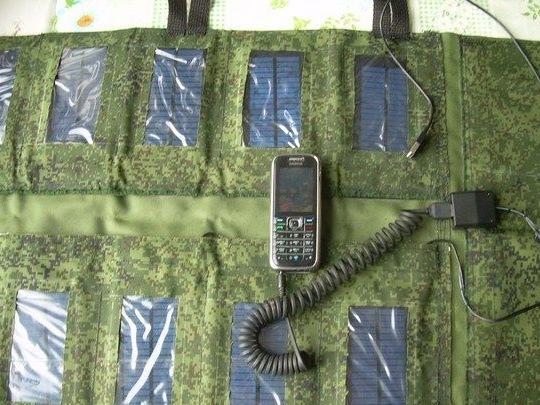
And it is charging.
I took a picture of the sky at that moment, so that you could understand under what sky / sun it began to charge.

It became interesting to me, and I measured the output of the solar panel with a tester, it was approximately 7.5 volts. Well, not bad, I think that in sunny weather my solar battery will go out to its charging mode.
If you believe the seller, then on a sunny bright day out of 10 panels I should get 5.5 watts and a current of 600 mA, I hope so.
Conclusion:
In principle, as an alternative to Chinese solar charging (given by me above), my can be considered. In the pluses to mine, you can add a low price tag and manual manufacturing. Well, see for yourself, if you're interested, then do it; if not, buy.
All success in creative work !!!

